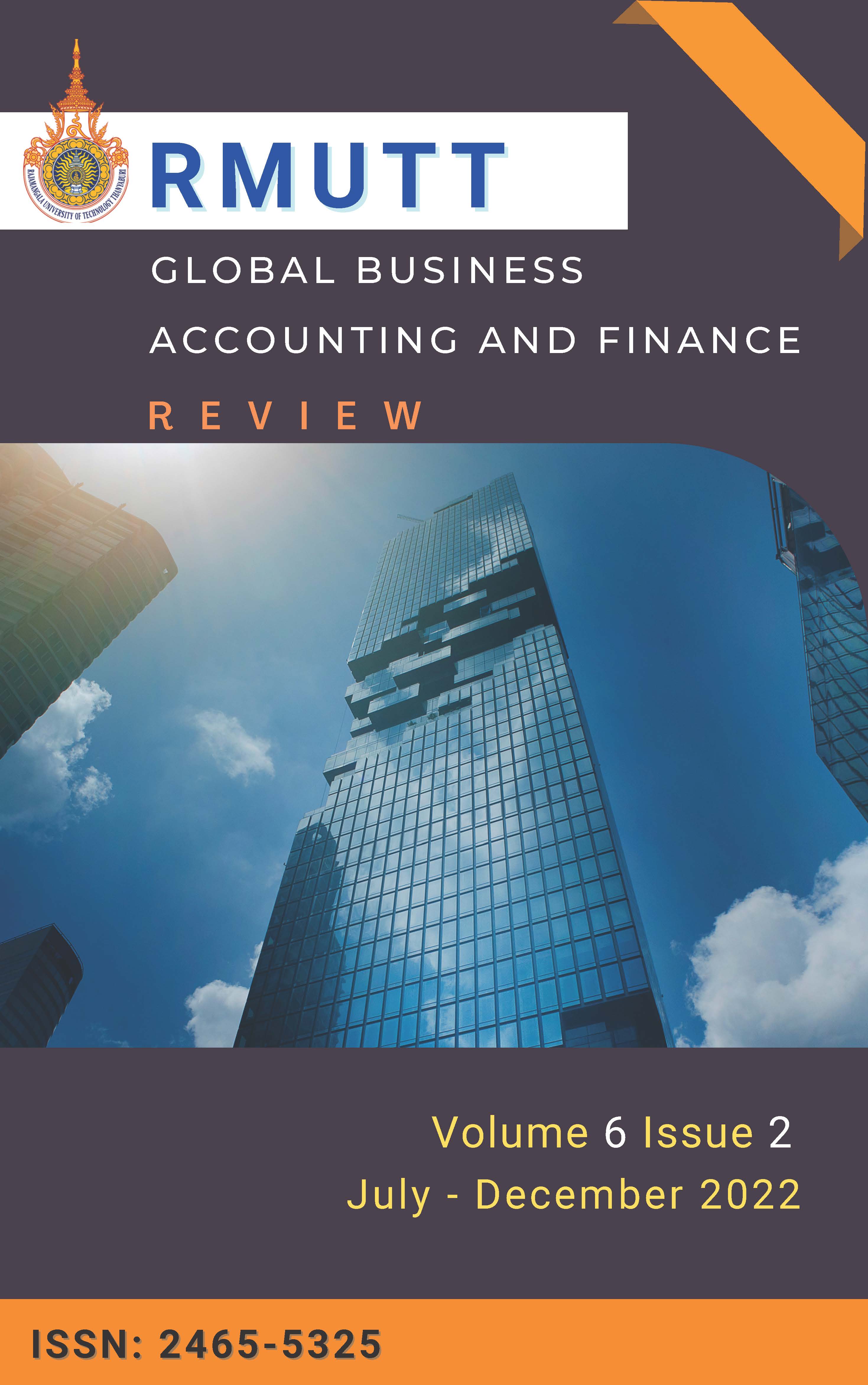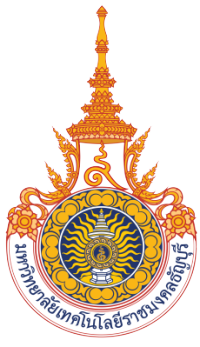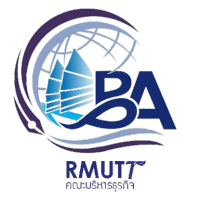EXPLORING THE RELATIONSHIP BETWEEN SOCIO-DEMOGRAPHIC CHARACTERISTICS AND TOURIST BEHAVIORS: AN EMPIRICAL STUDY IN THAILAND
Keywords:
Correlation Analysis, Pathum-Thani Province, Socio-Demographic Characteristics, Tourist BehaviorAbstract
In the past few years, the Covid-19 pandemic has affected consumption and tourism activities in Thailand’s special area of Pathum Thani. The pandemic has had a significant impact on travel volume within Thailand and there has been a marked decrease in the arrivals of domestic tourists to various tourist attractions. This paper found that domestic tourist decision making mainly responds to the individual intrinsic characteristics and tourist behavior. The paper presents the socio-demographic characteristics of tourists which indicates that tourists are mostly female, are between 26 and 35 years old, and hold a bachelor’s degree. Most tourists have different travel behaviours according to socio-demographic characteristics factors, both in terms of behaviour in tourism expenses and travel purpose. In addition, the study also found that socio-demographic characteristics of tourists including gender, marital status, education level, occupation, income, and domicile related to the tourism behaviour of Thai tourists in Pathum Thani province were statistically significant at the 0.05 and 0.01 levels. The findings from this study can be used to develop clearer recommendations for the tourism market development plan, responding to the behaviour of self-traveling domestic tourists.
References
Ajzen, I. (2005). Attitudes, Personality and Behavior. Open University Press.
Anderson, R. M., s Heesterbeek, H., Klinkenberg, D., & Hollingsworth, T. D. (2020). How will country-based mitigation measures influence the course of the COVID-19 epidemic?. The Lancet, 395(10228), 931-934.
Arch, G. W., Roberta, M. & Marion, B. (2004). Grounded Theory of Leisure Travel. Journal of Travel & Tourism Marketing, 17(1), 7-39.
Blackwell, R. D., Miniard, P. W., & Engel, J. F. (2001). Consumer Behavior. Texas: Harcourt College Publishers.
Cohen, A. S., Prayag, G., & Moital, M. (2014). Consumer behaviour in tourism: Concepts, influences and opportunities. Current Issues in Tourism, 17(10), 872-909.
Dowling, R.K., & Newsome, D. (2018). Chapter 1: Geotourism: definition, characteristics and international perspectives. Handbook of Geotourism. 1-12.
Ferber, R. (1977) Research by Convenience. Journal of Consumer Research, 4, 57-58.
Gonzalez, A. M., & Bello, L. (2002). The construct “lifestyle” in market segmentation: The behaviour of tourist consumers. European journal of marketin, 36(1/2), 51-85.
Goryushkina, N. E., Gaifutdinova, T. V., Logvina, E. V., Redkin, A. G., Kudryavtsev, V. V., & Shol, Y. N. (2019). Basic principles of tourist services market segmentation. International Journal of Economics & Business Administration, 7(2), 139-150.
Hanna, N. & Wozniak, R. (2001). Consumer behavior: An applied approach. New Jersey: Addison Wesley Publishing Company.
Hanafiah, M. H., Azman, I., Jamaluddin, M. R., & Aminuddin, N. (2016). Responsible tourism practices and quality of life: Perspective of Langkawi Island communities. Procedia-Social and Behavioral Sciences, 222, 406-413.
Huang, A., & Xiao, H. (2000). Leisure based tourist behavior: a case study of Changchun. International Journal of Contemporary Hospitality Management, 12(3), 210-214.
Hudson, S., & Ritchie, J. B. (2001). Cross cultural tourist behavior: An analysis of tourist attitudes towards the environment. Journal of Travel & Tourism Marketing, 10(2-3), 1-22.
Kanittinsutitong, N., Wang, A. B. A., Taihiam, N., Somwong, S., Nooring, W., & Inkaew, A. (2022). Guidelines for the development of tourism for tourists with different demographic characteristics in Sichon District, Nakhon Si Thammarat Province. Linguistics and Culture Review, 6, 40-55.
Kaosa-ard, M. (2002). Development and management of tourism products: the Thai experience. Chiang Mai University Journal, 1(3), 289-302.
Kattiyapornpong, U., & Miller, K. E. (2009). Socio‐demographic constraints to travel behavior. International Journal of Culture, Tourism and Hospitality Research, 3(1), 81-94.
Kastenholz, E., Carneiro, M. J., & Eusébio, C. (2005). The impact of socio-demographics on tourist behavior–analyzing segments of cultural tourists visiting Coimbra. Atlas Cultural Tourism Research Project, 1-18.
Kim, M. J., Lee, C. K., & Jung, T. (2020). Exploring consumer behavior in virtual reality tourism using an extended stimulus-organism-response model. Journal of travel research, 59(1), 69-89.
Koosol, S. & Petcharanon, T. (2018). Factors affecting tourists decision to visit the royal-initiated Mae Ngon River basin development project in Fang district Chiang Mai. Suthiparithat Journal, 32(101), 134-148.
Liu, T. & Xu, M. (2018). Preparing for the New Era of Transport Policies: Learning from Experience. Advances in Transport Policy and Planning, 1, 1-34.
MacInnes, S., Grün, B., & Dolnicar, S. (2022). Habit drives sustainable tourist behavior. Annals of Tourism Research, 92(103329), 1-10.
Mamirkulova, G., Mi, J., Abbas, J., Mahmood, S., Mubeen, R., & Ziapour, A. (2020). New Silk Road infrastructure opportunities in developing tourism environment for residents better quality of life. Global Ecology and Conservation, 24, 1-19.
Manpao, P. (2016). Agrotourism decision making behavior: a case study of Mahasawas canal in Nakornpatom Province. Journal of Thonburi University, 10(22), 104-110.
Madrigal, R. & Kahle, L. (1994). Predicting Vacation Activity Preferences on the Basis of Value-System Segmentation. Journal of Travel Research, 32(3), 22-28.
Meadows, C.W., Tang, L., & Zou, W. (2019). Unraveling public health crises across stages: understanding twitter emotions and message types during the California measles outbreak. Communication Studies, 70(4), 453-469.
Ministry of Tourism and Sports. (2022). Thai National Tourism Plan 2021-2022. Retrieved from https://nantourism.go.th/
Office of Tourism and Sports, Pathum Thani Province.(2018).Tourist attraction in Pathum Thani Province. Retrieved from https://pathumthani.mots.go.th/
Pizam, A., & Calantone, R. (1987). Beyond psychographics—values as determinants of tourist behavior. International Journal of Hospitality Management, 6(3), 177-181.
Saenkam, B. (2021). The Behavior of Thai Tourists after COVID 19 Situations. Journal of Liberal Arts and Service Industry, 4(1), 160-167.
Samerjai, C. & Wareewanich, T. (2008). Principle of Marketing. Bangkok: Se-education.
Santos, V., Ramos, P., Sousa, B., Almeida, N., & Valeri, M. (2021). Factors influencing touristic consumer behaviour. Journal of Organizational Change Management, 35(3), 409-429.
Sathish, S., & Rajamohan, A. (2012). Consumer behaviour and lifestyle marketing. International Journal of Marketing, Financial Services & Management Research, 1(10), 152-166.
Scott, A. C., Girish, P. & Miguel M. (2014). Consumer behaviour in tourism: Concepts, influences and opportunities. Current Issues in Tourism, 17(10), 872-909.
Sirirak, P. & Kulis, N. (2011). Factors influencing on tourist's ecotourism behavior in Phuket Province. Srinakharinwirot Business Journal, 2(1), 96–108.
Song, H., & Zhang, N. (2014). Study on consumer decision making in rural tourism based on factor analysis model. Journal of Chemical and Pharmaceutical Research, 6(10), 722-726.
Stern, P. C. (2000). Toward a coherent theory of environmentally significant behavior. Journal of Social Issues, 56(3), 407–424.
Su, Z., et al. (2021). Mental health consequences of COVID-19 media coverage: the need for effective crisis communication practices. Globalization and Health, 17(1), 4.
Thirachaya, C., & Patipat, T. (2019). Tourist behaviors and needs corresponding to historical tourism management at Khao Phra Wihan National Park, Sisaket Province, Thailand. African Journal of Hospitality, Tourism and Leisure, 8(1), 1-17.
Timchareonsuk, S. & Pattanasampan, A. (2016). Factors that affect travel behavior of Chinese Tourists Traveling to Koh Larn, Chonburi Province. (Graduate School of Commerce, Burapha University).
Turner, R. & Carlson, L. (2003). Indexes of Item-Objective Congruence for Multidimensional Items. International Journal of Testing, 3, 163-171.
Waewkaew, T. (2014). Tourism behaviour of Thai tourists travelling to Korea or Japan. (Master’s Thesis, Rajamangala University of Technology Thanyaburi).
Wood, W., Quinn, J. M., & Kashy, D. A. (2002). Habits in everyday life: Thought, emotion, and action. Journal of Personality and Social Psychology, 83(6), 1281–1297.
Yamane, T. (1973). Statistics: An Introductory Analysis. New York: Harper and Row Publication.
Yamjamaung, B. & Jetanon, S. (2016). 3-Star Hotels in Sukhumvit Area of Bangkok and Potentials Tourism Industry to ASEAN Community. Bangkok: Suan Sunandha Rajabhat University.
Yoosub, K. (2012). Thai Tourist’s Behaviors and The Marketing Mix for The Historical Tourism in Kanchanaburi Province. (Master’s Thesis, Nakhon Pathom Rajabhat University).
Zhang, J., & Marcussen, C. (2007). Tourist motivation, market segmentation and marketing strategies. In 5th Bi-Annual Symposium of the International Society of Culture, Tourism, and Hospitality Research, June 4-6, 2007, Charleston, South Carolina USA.
Downloads
Published
How to Cite
Issue
Section
License
Copyright (c) 2022 Faculty of Business Administration, Rajamangala University of Technology Thanyaburi

This work is licensed under a Creative Commons Attribution-NonCommercial-NoDerivatives 4.0 International License.









